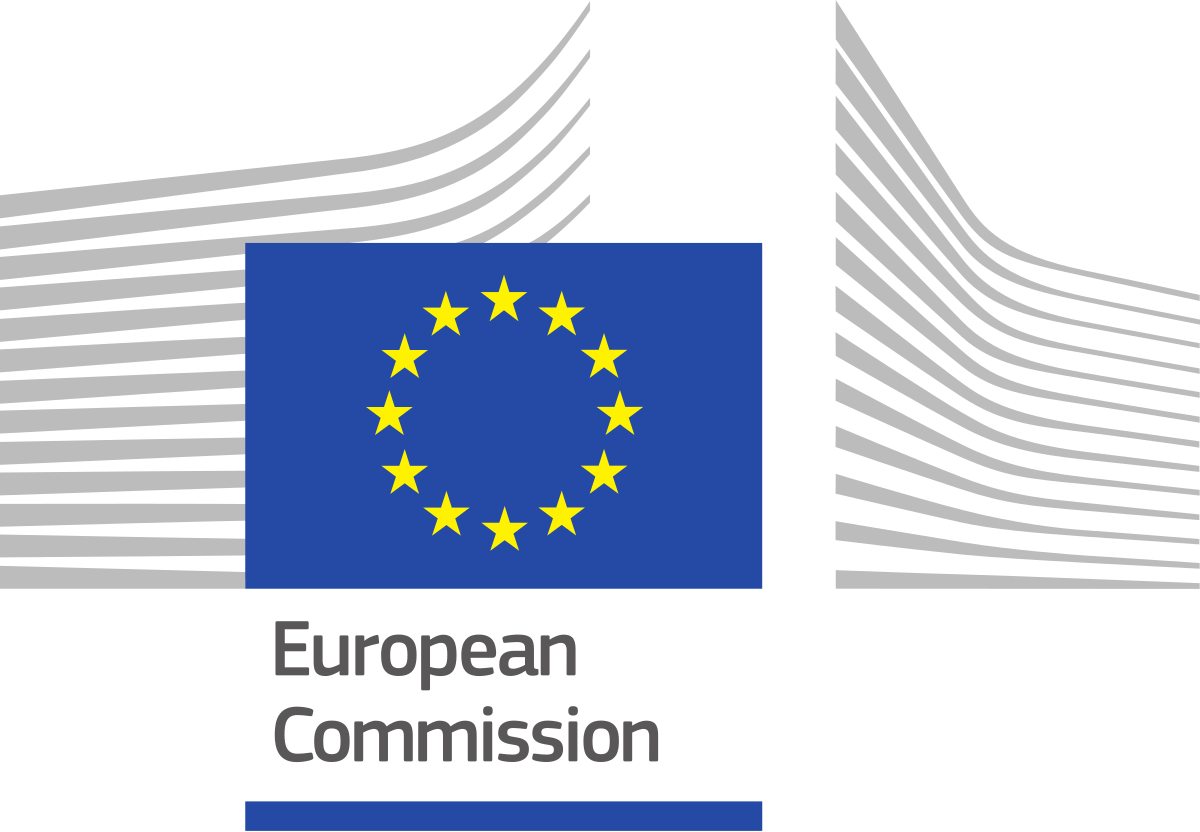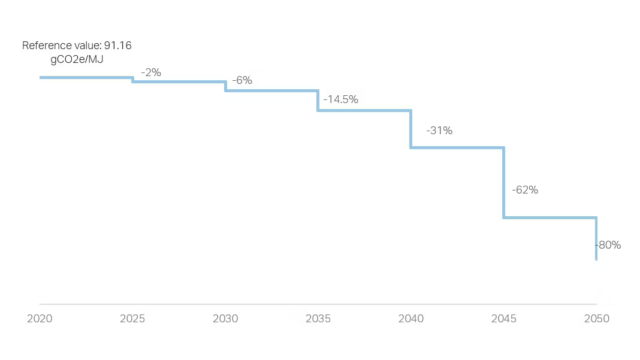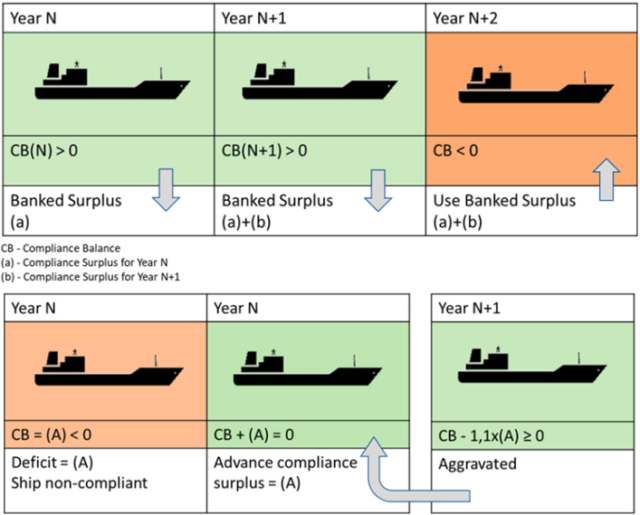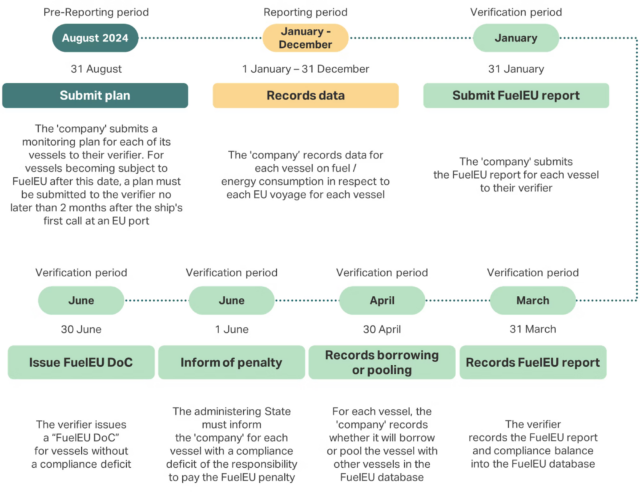FuelEU: countdown to entry into force
By Oscar Pearce on August 11, 2024

Click to learn more. The FuelEU scheme, a mechanism to promote the incremental decarbonisation of maritime fuel, is set to launch on 31 August.
The FuelEU Maritime Regulation, a cornerstone of the European Union’s Fit for 55 package, seeks to decarbonize the maritime sector by mandating the incremental adoption of low and zero-carbon fuels. The scheme is mere weeks away from launch. By August 31st this year, companies must submit a monitoring plan outlining how they intend to comply with the scheme. The full scheme will enter into force 1 January 2025.
Modest targets with sophisticated compliance mechanisms

Click to expand. Timeline for reducing GHG intensity value of shipping fuels via FuelEU, with a reference value of 91.16g CO2 emitted per mJ. Source: Mærsk Mc-Kinney Møller Center for Zero Carbon Shipping.
Adopted in July 2023, the FuelEU scheme sets relatively modest short-term targets for reducing the emissions intensity of shipping fuels, starting with a 2% reduction by 2025, but reaching 80% by 2050. Those reductions are measured by reference to a baseline value of 91.16 grams of CO2 per MJ, a value calculated from vessel emissions reported in 2020 via the THETIS monitoring, reporting and verification system.
The regulation applies to all ships over 5,000 gross tons at EU ports, with certain exceptions and adjustments. While ships undertaking intra-European journeys must provide a full accounting of their energy consumption, the regulations only apply to half of the energy used in journeys starting or finishing outside of Europe. This is intended to strike a balance between maximizing the scheme’s impact and minimizing competitiveness concerns.

Click to expand. The FuelEU scheme will allow a ship to bank or borrow compliance deficits/surpluses. Source: EU Commission.
The FuelEU scheme will also operate banking, borrowing and pooling mechanisms, to support a flexible and efficient transition. If a ship goes above and beyond decarbonisation targets, that excess can be banked and used to meet targets in future reporting periods. Likewise, an underperforming ship can make up for falling short of decarbonisation goals by overperforming in the next reporting period, though a 10% surcharge is applied. Finally, multiple ships can be combined into a single pool, and report as such. This way, private operators can essentially negotiate their own book and claim arrangements.

Click to expand. The FuelEU scheme gives operators several options for navigating the scheme. Source: Mærsk Mc-Kinney Møller Center for Zero Carbon Shipping.
This structure creates a multi-pronged pricing mechanism that operators will be required to navigate. Firms will choose between accepting the penalty cost of non-compliance, making investments in renewables to satisfy bare minimum compliance, or overachieving to sell their surplus emissions allowance.
The role of ammonia, hydrogen and RFNBOs in FuelEU
Technology neutrality is an important principle of the FuelEU scheme, and as such it does not prescribe specific pathways to emissions reduction. That said, the use of Renewable Fuels of Non-Biological Origin (RFNBO) is highly incentivised. From the full launch of the scheme on 1 January 2025 to 31 December 2033, a 2 times multiplier applies to all RFNBOs used. This multiplier nominally increases the ship’s total energy consumption, thereby decreasing the ship’s GHG intensity, which is the relevant metric for the scheme.
The scheme takes a ‘carrot and stick’ approach to RFNBO uptake, however. If RFNBO usage has not reached 1% of total energy use in the 2031 reporting period, a 2% RFNBO requirement will be automatically applied to ships from 1 January 2034 (with subsequent penalties for non-compliance).

Click to expand. The compliance timeline for FuelEU, with implementation to begin at the end of this month. Source: Mærsk Mc-Kinney Møller Center for Zero Carbon Shipping.
The certification of RFNBOs is crucial to operationalising these measures. To be recognised as an RFNBO under the FuelEU scheme, a fuel must be certified in accordance with the requirements of the Renewable Energy Directive (RED) and its delegated act. This means that, among other things, RFNBOs must represent a 70% GHG emissions saving compared to the RED comparator. They must also adhere to strict additionality requirements for electricity inputs, which incentivise the construction of new renewable energy sources. The EU’s approach to governing this certification process is to recognise national schemes as well as voluntary schemes. For RFNBOs, unlike biofuels, recognised schemes are only just emerging, with ISCC, REDcert and KZR INiG being the furthest along that process.
To learn more about the certification requirements of FuelEU, see this explainer from the Mærsk Mc-Kinney Møller Center for Zero Carbon Shipping. For more information on the scheme, as well as its connection to the maritime extension of the EU Emissions Trading Scheme , see the EU Commission’s briefing.